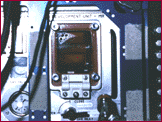




Objectives
In order to conduct Risk Mitigation for the BioTechnology Facility on the ISS, the BTS was designed and flown on the Mir Space Station. The purpose of the BTS was multi-fold and included: (1) demonstration of technology and systems to support biotechnology investigations, (2) validation of BTF concepts and systems through long-duration operations, (3) verification of BTF operational and training procedures, (4) verification of the launch and transfer of operating experiments between orbiting spacecraft, and (5) Fundamental Science investigations.
Shuttle-Mir Missions Approach
Results
The BTS Operations experiment results was two-fold in the sense that it evaluated the operations of hardware and it was used to support on-board investigations. The major accomplishments included technology and systems demonstration in these areas:
· Data Acquisition and Control System (ECC, Flashcards, recovery software)
Conclusions are pending completion of analysis in FY99.
Earth Benefits Publications Principal Investigators![]()
NASA-2 - NASA-7
The table seen below is a summary of the BTS facility components that went through diagnostic testing. The purpose of the testing was to determine the possible risks involved with data acquisition from the BTS facility.
Mission
Location
Duration
Facility Components
Pre-2
Spektr Module
105 days
Passive PCMCIA Card
2
Priroda BTS Facility
156 days
Powered DACS
3
Priroda BTS Facility
130 days
Powered DACS with Bioreactor
4 & 5
Priroda BTS Facility
263 days
Powered DACS
6
Priroda BTS Facility
140 days
Bioreactor
7
Priroda BTS Facility
142 days
Powered DACS and
Powered DACS with Bioreactor
This table is a summary of the activities that were completed during each science mission. In addition to hardware testing, the BTS facility was used to support cell cultures in the bioreactor.
Mission
Facility Hardware
Activity Summary
Pre-2
Passive PCMCIA Card
SRAM cards in stowage are susceptible to radiation induced SEU corruption.
Unpowered FLash PC-Cards in stowage are immune to SEU corruption at Mir radiation levels.
2
Powered DACS
Powered FLash PC-Cards are immune to SEU corruption at Mir radiation levels.
Verified DACS integrated operation.
3
Powered DACS with Bioreactor
Verified DACS control of experiment specific hardware.
Verified operations of DACS RRS.
4 & 5
Powered DACS
Extended previous results for larger capacity flashcards and longer duration operations.
Detection of DRAM SEUs.
7
Powered DACS and
Powered DACS with Bioreactor
Verified capability of DACS RRS to repair, monitor and protect SRAM PC-Cards in flight.
Extended and reinforced previous results.
· Gas Supply Module
· System performance, maintenance and extended operation
· Evaluation of monitoring (video, microscope) systems
· Experiment change-out procedures
· Data Acquisition, storage and downlink
· Bioreactor design and operations
· Bioreactor sensors and automation control systems
· Cell culture operations
· Media preparation and storage
Biological processes can be altered as a result of microgravity. The unique qualities of the microgravity environment could lead to new discoveries in biotechnology which could ultimately result in improvements in medicine, agriculture, and pharmaceuticals. NASA's biotechnology facility provides a tool to conduct biotechnology experiments while in the microgravity environment. Advances made in hardware development have application for designing better instrumentation on the ground.
None available at this time
Steven R. Gonda, Ph.D.
NASA/Johnson Space Center
![]()
|
|
Curator:
Julie Oliveaux
Responsible NASA Official: John Uri |
Page last updated: 07/16/1999
.gif)